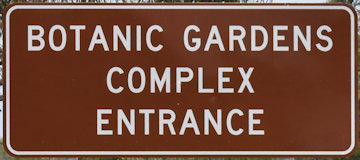The Botanic Gardens Complex in Bundaberg is more than botanic gardens with several attractions to bring you into the complex. If gardens are not your thing, there is probably something else here to interest you.
The opening hours and free access are specific to the gardens. The attractions within the complex operate to their own days and hours and some have entry fees. Ensure you check each as the days and hours vary so you may want to coordinate your visit if you intend to visit multiple attractions.
Gardens
The gardens are the main feature of Bundaberg’s Botanic Gardens. The gardens feature over 10,000 varieties of trees and shrubs on 27 hectares of land, surrounding four lakes.
Australian Rainforest
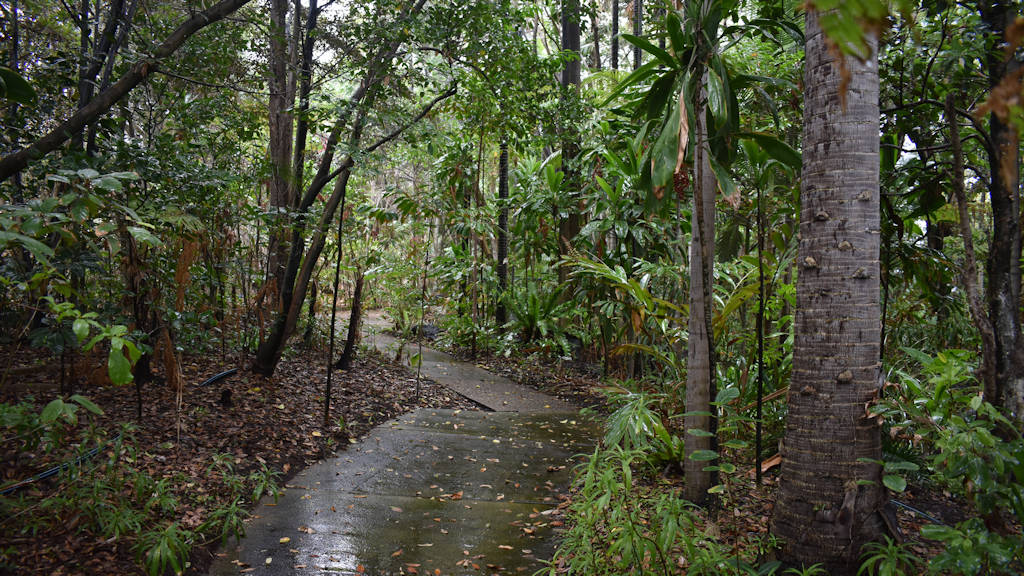
The Australian Rainforest garden contains tropical and sub-tropical species. Bundaberg has the warm climate for these plants and the overhead sprinklers keeps it constantly wet and humid. Australian rainforest is only 1 percent of the land in the country, yet represents more than half of all species.
Bamboo Garden
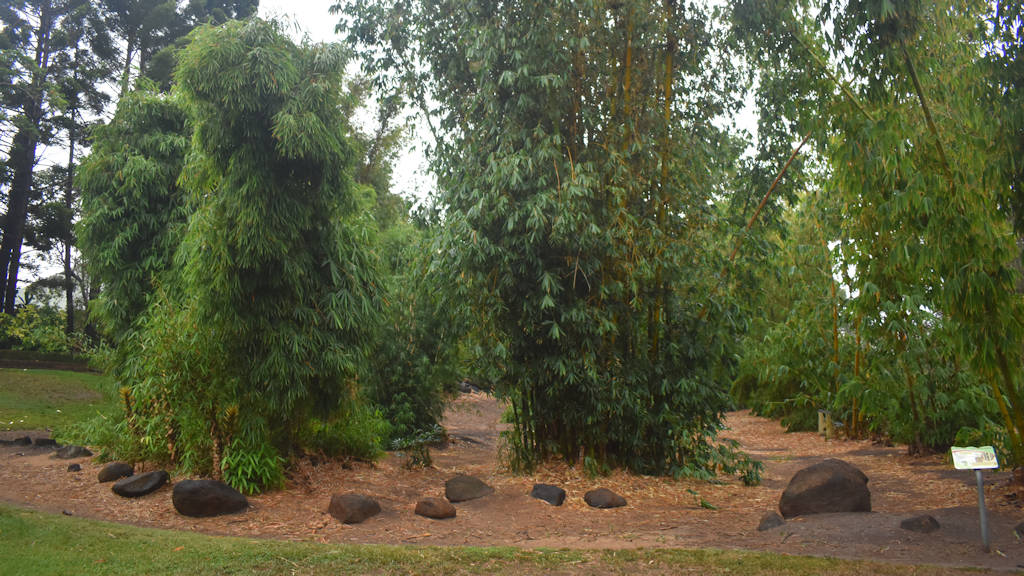
Bamboo is a fast growing plant, the fastest on the planet. In ideal conditions it can grow 90cm in 24 hours, producing more oxygen and absorbing more carbon dioxide than other plants. It is incredibly strong too, stronger than steel, making it suitable for building uses.
Bromeliad Garden
Bromeliads have tight rosettes that channel water down to the centre, creating a habitat for frogs, snails and insects. It also captures leaves providing nutrients in the water to feed the plant.
Bromeliads, or Broms, flower only once before perishing. When they flower, it starts to turn a reddish colour before small flowers are formed. Look around a flowering brom and you may find new ones called pups coming from the base.
Chinese Garden
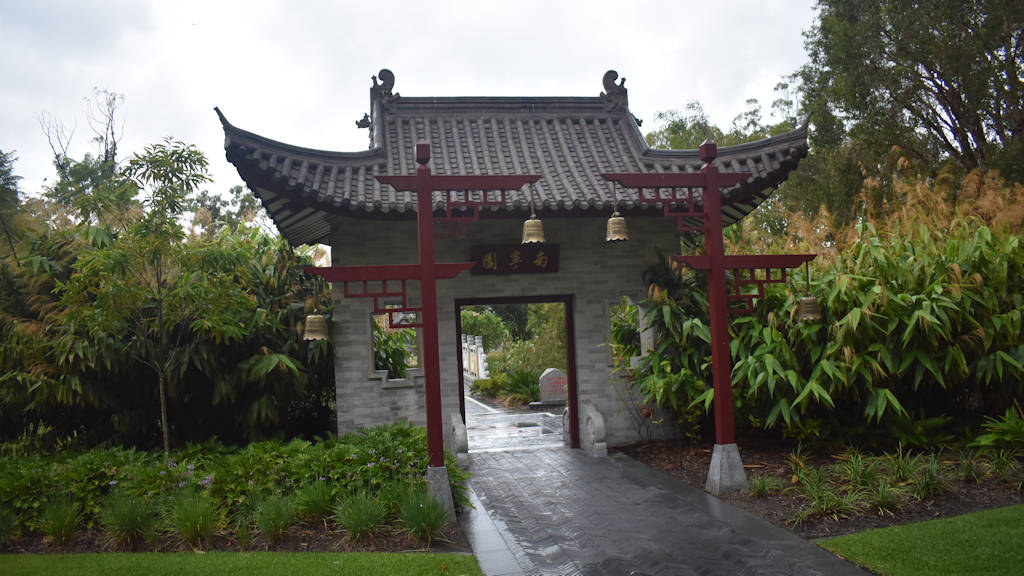
The Chinese Garden was a gift from Bundaberg’s sister city, the City of Nanning in 2018. It marked the 10th anniversary of the relationship. Nanning is located in Southern China with a similar climate to Bundaberg.
Entry to the Chinese Garden is through a moon gate and crossing a bridge over a small lake. The lake was completely dry when I was there but immediately started to get a top-up. I took refuge in a shelter in the gardens while waiting for the rain to easy. Returning in 2024, the lake was full.

The gardens highlight the friendship, goodwill and co-operation through the exchange program between the cities, containing cycads, bamboo, and tiger grass.
Fern Garden
The ferns garden represents one of the oldest types of plants. The ferns receiving a misting every day to reproduce the moist environment they are found in and protected by larger trees from the extremes of heat and cold.
The trees also provide a place for one of the ferns found high above the ground, the large staghorn fern. They are an epiphyte, or air plant, able to survive without soil. The fronds grow up to 2 metres with a shape resembling horns.
At the back of the garden near the railway line, look for the jade vine. It is a Philippine native vine with turquoise claw shaped flowers.
Friendship Grove
The friendship grove was created in 1998 with the first tree planted. Plaques are scatted through the grove representing several groups, including from America, Japan, and Vanuatu. A tree dedication happens for each visit to the Friendship Grove by the Bundaberg Friendship Force Club ![]() .
.
Hinkler Garden
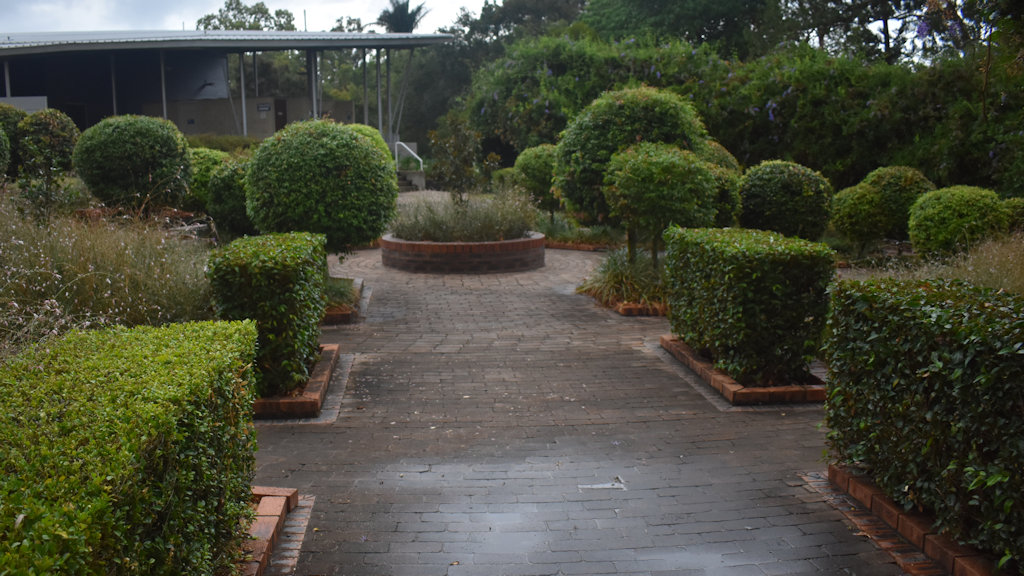
The Hinkler Garden, located on the grounds around the Hinkler House ![]() , incorporates a variety of flowers. You will find roses, camellias, and topiarised plants. The sandpaper vine produces delicate purple flowers in the otherwise rough and stiff green leaves. A covered arch has one of the most shadiest seats for a summer’s day to sit and admire the garden.
, incorporates a variety of flowers. You will find roses, camellias, and topiarised plants. The sandpaper vine produces delicate purple flowers in the otherwise rough and stiff green leaves. A covered arch has one of the most shadiest seats for a summer’s day to sit and admire the garden.
Japanese Garden
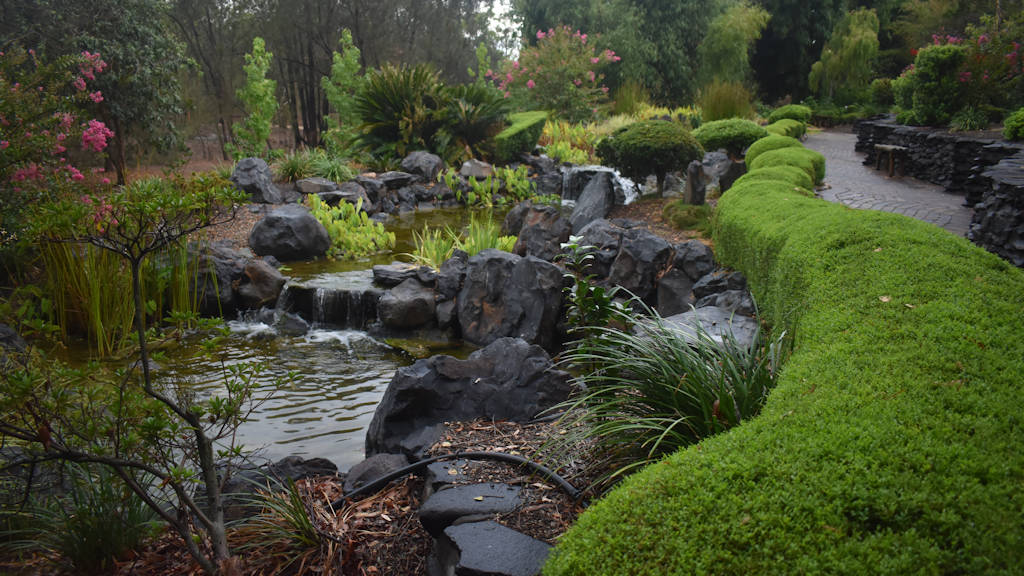
The Japanese Gardens were built to celebrate another sister city of Bundaberg, the City of Settsu. Settsu is part of a prefecture of Japan’s second biggest city, Osaka.
Located near Fairymead House and the Bamboo Gardens at the southern end of the botanic gardens complex, the gardens are along a path beside a tiered waterway separated by a waved hedge and dark stone wall on the other side.
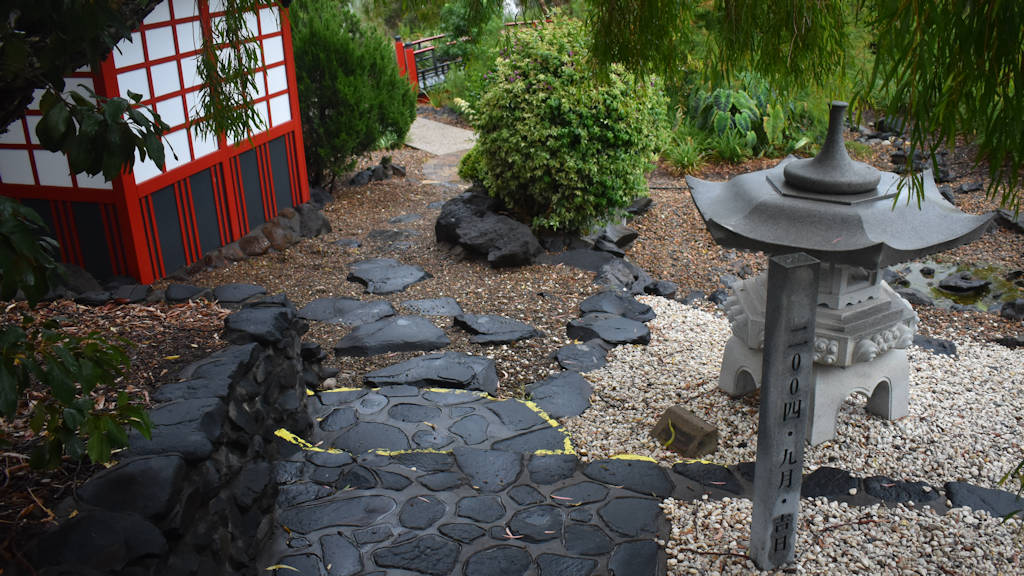
Starting from a torii gate, the leads down to the friendship pavilion, arched bridge, and a stone carved lantern. The dark stones of the path wall and towards the lower section used to pave the steps were darker after the fresh fall of rain, contrasting the vibrant greens of the gardens.
The gardens contain Japanese cycads, azaleas, and liquid amber with star shaped leaves that turn orange and red during autumn.
Palm Grove
The Palm Grove can be found between the Hinkler Garden and the lakes, containing a variety of palms from across the world, such as bismark palms from Madagascar and dwarf date palms from South East Asia.
Prehistoric Garden
For some ancient plant examples, head to the Prehistoric Garden, with pines and ferns from millions of years ago. The Bunya Pine, unique to Australia, is a source of food but don’t stand underneath when they are dropping cones. Weighing up to 10 kilograms they can be dangerous falling from over 40 metres above.
Find the crocodile fern’s wrinkly leaves with dark green veins and the tallest of all, the rough tree fern. Near the railway station you may find the star-shaped flowers of the ylang ylang above, used in essential oils for its fragrance.
Rare Fruit Tree Orchard
Find unusual and exotic fruits from across the world. These are not commonly found at your local grocery store. Peanut butter tree from South America produces fruit with a texture of peanut butter but has a rice sweet taste (disappointed). The giant lau lau from Papua New Guinea has a bright red fruit with an apple-like flavour. Or there is the miracle fruit tree that changes your taste buds. After eating the miracle fruit, your tastebuds ability to detect sour is removed, making everything taste sweet.
Sclerophyll Woodland
The Sclerophyll Woodland is a typical Australian open forest. Sclerophyll comes from the Greek words skleros and phyllon, meaning hard leaf, due to the thick and waxy leaves common to eucalypts. The thick leathery leaves of the plants help to provide resistance to drought and bush fires.
Wallum Walk
The Wallum Walk can be found near the Japanese Gardens and Bamboo Garden, comprising of swampy heathland vegetation. They are typically tolerant of areas where there is fire activity, including banksias and bracken ferns.
Woodworkers Guild
The Woodworks Guild features plants that were significant in the logging and timber milling industry in Bundaberg before sugarcane was introduced. Bunya pine, hoop pine, silky oak, and leichhardt pine are featured.
Attractions
There are several attractions at the Bundaberg Botanic Garden Complex and you may be brought to the gardens by them first. Some of them are brown signs in their own right.
Bundaberg & District Historical Museum
Located near the cafe, the Bundaberg and District Historical Museum has a collection of local artefacts, photographic collection, and information about Bundaberg and the surrounding districts. Dating back to early pioneer days, displays include locally collected items and a case of birds presented by Charles Skyring to the Queensland Exhibition in Brisbane in 1873.
Fairymead House
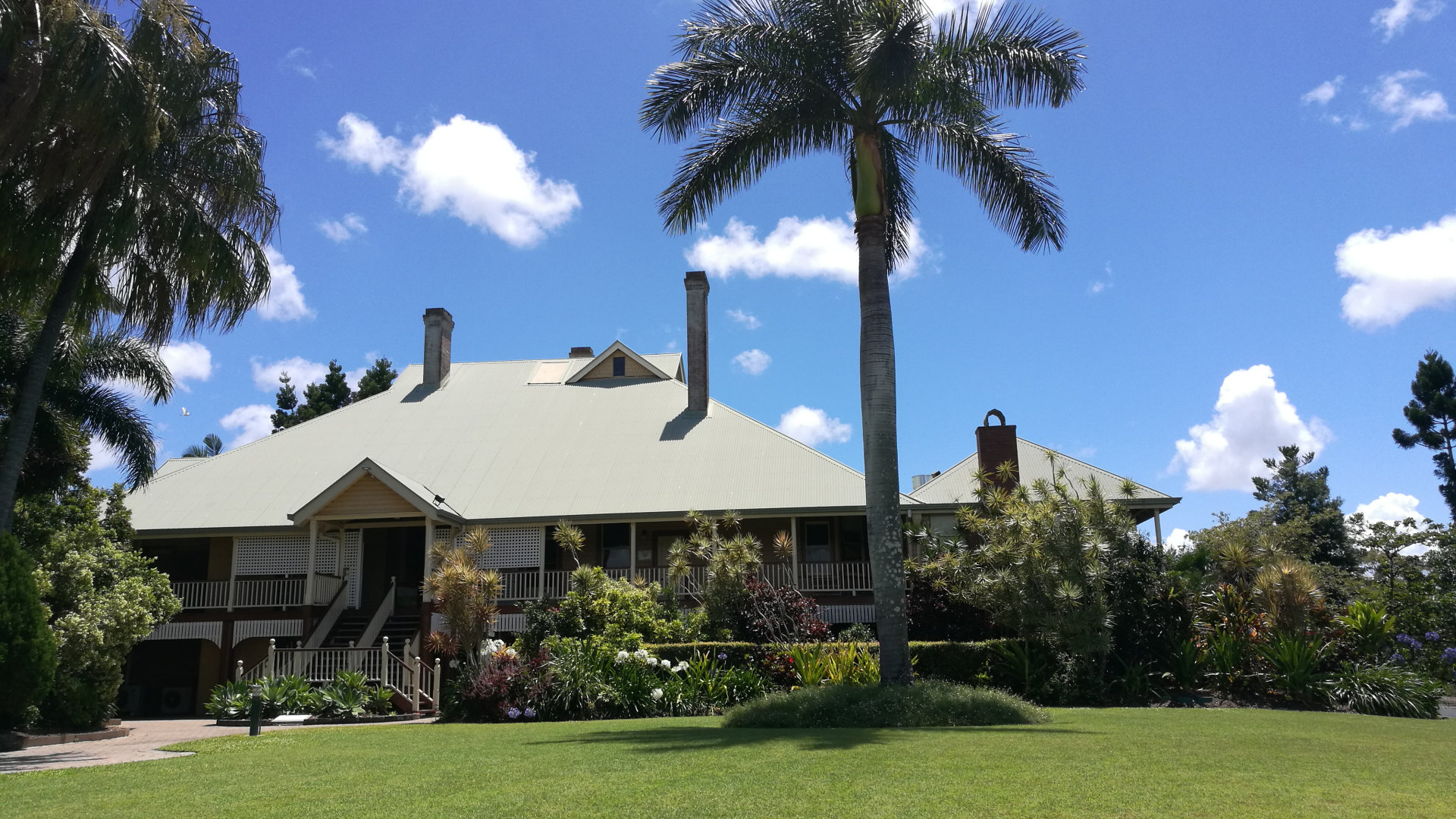
Fairymead House ![]() is an old plantation house built in the late 1800s as the family home of the Young family who established Fairymead Plantation and Fairymead Sugar Mill. The homestead contains a museum of the sugar industry.
is an old plantation house built in the late 1800s as the family home of the Young family who established Fairymead Plantation and Fairymead Sugar Mill. The homestead contains a museum of the sugar industry.
Figtree Chapel
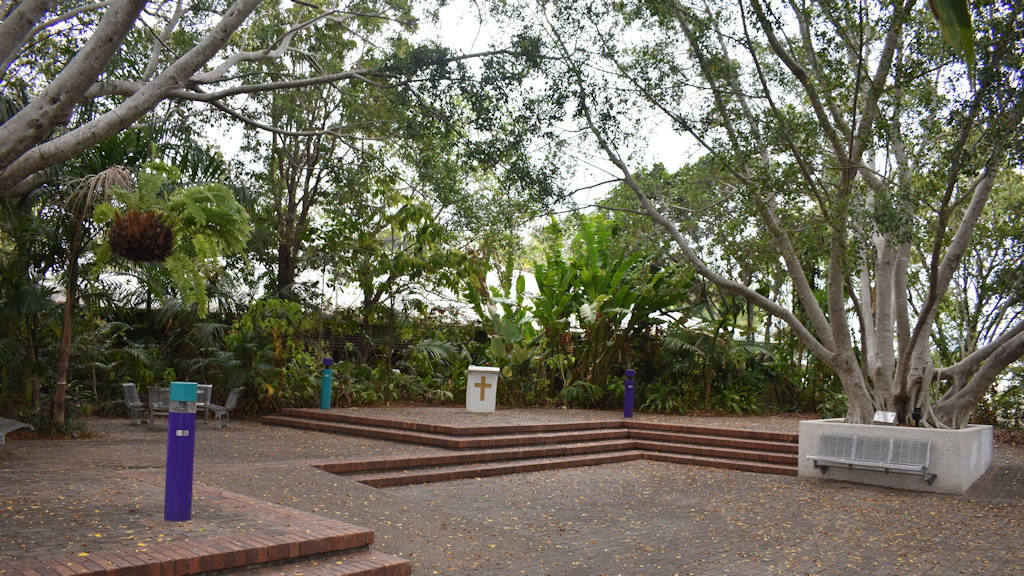
Surrounded by large mature fig trees, the Figtree Chapel can be booked for weddings and events. In one corner is an ambo with a cross on the front of it (non-moving lectern). It was renovated in 2021 with new decking and seating.
Hinkler House
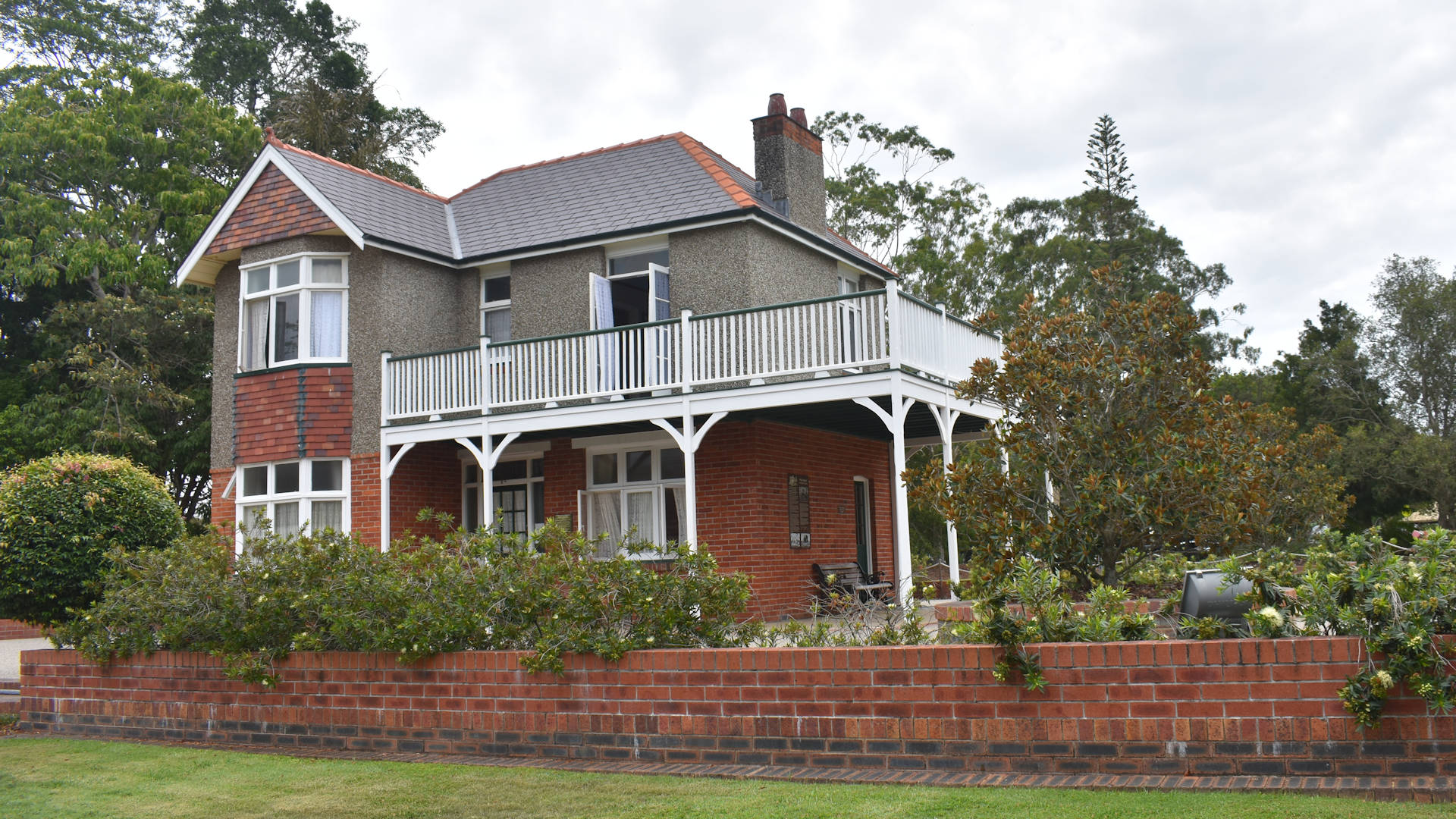
Hinkler House ![]() was built in Thornhill Estate in Southampton, England in 1925. A modest detached house, he named the home “Mon Repos” to celebrate the beachside location of the same name in his Australian hometown of Bundaberg where he had fuelled his love of flight. Hinkler House is included as an additional museum to view when you visit Hinkler Hall of Aviation.
was built in Thornhill Estate in Southampton, England in 1925. A modest detached house, he named the home “Mon Repos” to celebrate the beachside location of the same name in his Australian hometown of Bundaberg where he had fuelled his love of flight. Hinkler House is included as an additional museum to view when you visit Hinkler Hall of Aviation.
Hinkler Hall of Aviation

Hinkler Hall of Aviation ![]() is a museum built as a tribute to aviation pioneer Bert Hinkler, the building itself has been designed to resemble the wing of a plane. Bert made record-breaking flights locally in the 1920s and flew the first solo flight from England to Australia.
is a museum built as a tribute to aviation pioneer Bert Hinkler, the building itself has been designed to resemble the wing of a plane. Bert made record-breaking flights locally in the 1920s and flew the first solo flight from England to Australia.
Railway Station
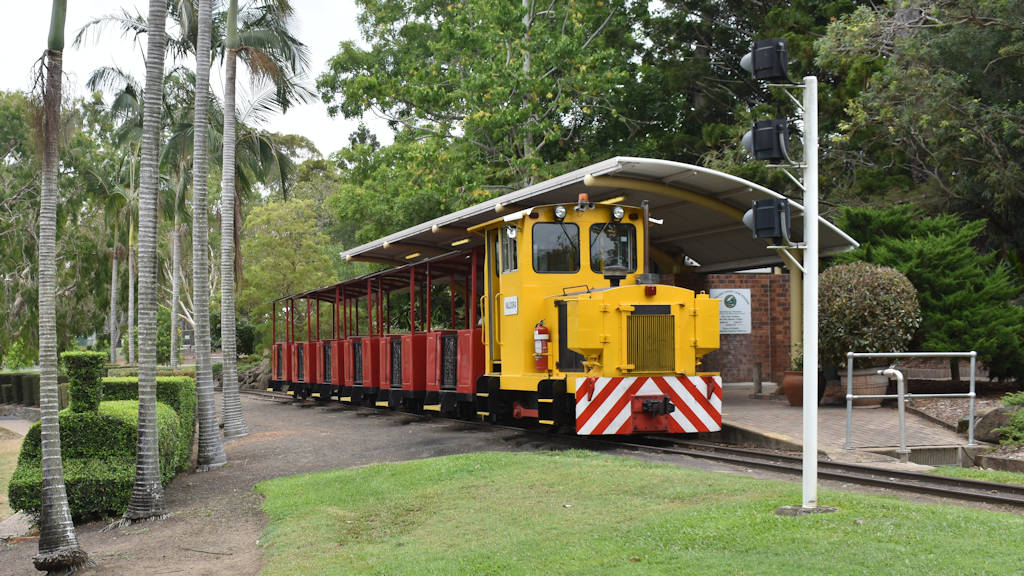
Before you can say “I like trains”, there is one of those too. The Australian sugar cane railway loops through the various gardens with the train station located at the cafe, near Hinkler House. Near the train station is a train shaped topiary.
There is a steam or diesel locomotive pulling the small carriages behind where you sit for the ride. The train runs from 10am until the last train departs at 3.30pm. Rides are $5 per adult and only $2 per child. Families can go for $14.
Playground
The playground is located near the entrance where Hinkler Hall of Aviation is. The playground has a lot of equipment with options suitable from young ages. A small water feature with a hand water pump that can be found at a few big parks these days, power a leaf boat down the rapids provides entertainment.
The playground is surrounded by sheltered picnic tables, accompanied by free BBQs for a great family budget lunch while at the botanic gardens.

